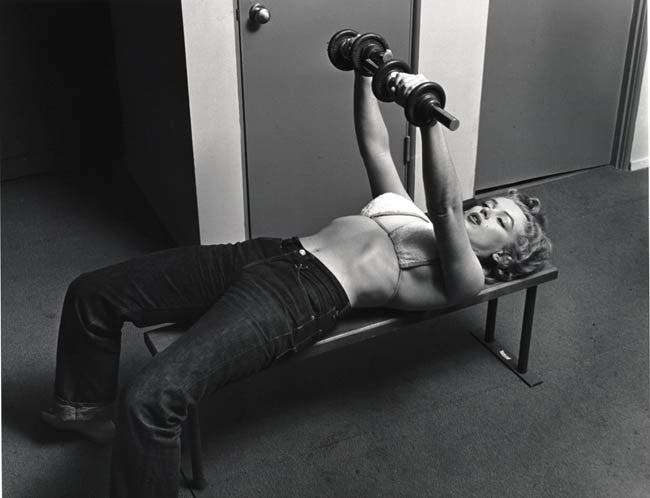Your Cart is Empty
Levi's® Denim and Patches. 160 Years of History

There's never been a fabric with as much mass appeal as denim. A long-standing favorite for everyone from construction workers to supermodels, denim is the fabric of choice for people around the world.

The rugged durability of denim makes it a reliable, hard-working fabric that lacks pretension, yet can be used for almost every occasion. It's little surprise that it has become the quintessential fabric of comfort and progress.
Though denim had been used for centuries, it didn't spike in popularity until the invention of blue jeans. And for that service to humankind, we can thank the young immigrant Levi Strauss.
Levi Strauss and the Invention of Blue Jeans
Today, Levi's® are the most well known, worn and replicated jeans in the world. Yet few would have predicted such success from the company's humble beginnings.

In the mid 19th century, Levi Strauss was a first generation German immigrant on a quest for a better life. The allure of the Gold Rush propelled him towards California, though Strauss quickly found that his fortune could instead be found selling dry goods to hungry miners.

While selling to miners, Levi noticed that the pants they were wearing were not up to the rough work they were put through, causing them to tear regularly. In 1872, Strauss received a letter from a customer named Jacob Davis who had an innovative idea for stronger, more durable work pants with rivets along the pockets to prevent them from tearing. Davis was in search of a partner to get his idea off the ground, and Strauss recognized a good business idea when he saw one.

The two men joined forces and the Levi Strauss Supply Co manufactured its first pair of copper-riveted reinforced “waist overalls” in 1873. Miners were quick to recognize the superior quality of their product and the pants were an instant hit.

These waist overalls, (later termed blue jeans) became a greater success than the two men had anticipated, and Levi Strauss & Co transitioned into making them full time. Soon their production expanded to include jackets and other outwear made from denim fabrics that were bought from Cone Mills in North Carolina.
By 1890, the company was officially incorporated and the waistline of each pair of jeans was stamped with the lot number “501®”.

By the 1920s, Levi’s® waist overalls were the undisputed pants of choice for working men in the Western states. Cowboys and superstars decked in Levi's® denim like Gary Cooper and Bing Cosby began to show up on the silver screen, propelling them to almost mythic status while denim jeans began to become synonymous with independence and rugged individualism.

Explosive growth was maintained throughout much of the 19th and 20th centuries as jeans began to become more accepted and iconic as a distinctly American style. In 1934, the first pair of women's jeans, termed Lady Levi's® were created, and given the lot number 701 to distinguish them from the previously available menswear.

Artistic Expression Through Patches
As Levi's® became more popular, American youth sought out unique ways to express their individuality while wearing them, mainly through embroidered patches. Though jeans had been patched for years as a method of prolonging their lifespan, the children of baby boomers began to use patches for purely aesthetic reasons.

Flower children of the 1960s began to dress themselves in secondhand jeans and jackets embellished with printed and embroidered patches, giving them ample ways to personally alter their outfits. Oftentimes patches served a duel purpose of artistic expression and ideological affiliation, as patches often expressed the wearers worldview or political affiliation (peace signs were especially popular).

Today, denim patches are seeing a resurgence in popular culture, both on the runway and with vintage collectors. Through the use of patches, Levi's® wearers are able to use their wardrobes to express a sense of personal identity and group affiliation.
The Symbolism of Levi's®: Tabs, Horses and More!
Though patches were added as a fashionable extra to Levi's® jeans, the pants themselves have plenty of ways of setting themselves apart from the crowd.
Even though Levi's® were synonymous with rugged durability since the beginning, Strauss was concerned about losing his brand recognition after his patent ran out in 1890. In order to differentiate his product from the dime-a-dozen denim jeans that had become available, he created many key ways for consumers to immediately recognize a pair of Levi's®, and thus have the mindset that Levi's were the height of quality for blue jeans.

Red Tab: a red “tab device” on the back right pocket of Levi's® jeans was added in 1936 to create a signature pop of color against the dark denim with Arcuate stitching. This was especially effective during WWII when rationing caused there to be a shortage of metal, fabric and thread. During this time, red paint was used to create the trademark tab. Anything for a little brand recognition!

Two Horse Logo: Levi knew that his pants were something special, and he wanted to ensure that his customers understood that. The logo of every pair of jeans since the 1890s has proven the rugged durability of Levi's® by showing two horses pulling the pants in opposite directions without any damage to the jeans, resulting in the nickname “Two Horse Brand”. Though the logo has changed over time, the horses have stayed and remain an iconic symbol of Levi's®.

Button Stamping: The stamping on the buttons on a pair of Levi's® is a good way to date and authenticate them. As a rule, jeans with a single stamped digit are older (usually from before the 70s) than jeans with a three digit stamping on the top of the button. With a little research, you can learn which factory your jeans were made in from the three digit number. Reproduction jeans will normally be stamped '555' and newer Levi's® and fakes will be stamped '501'.

Today, almost 160 years after their conception, the Levi's® jean have officially mastered popular culture. A long history of tradition and quality have made Levi's® jeans highly desirable as a collectors item. The legacy of American-made Levi's® jeans should make any fashion fan proud to own them.
Photo Credits:
https://selvedgeyard.com/2010/10/19/even-cowboys-get-the-blues-vintage-photos-of-dudes-in-denim/
http://www.levisguide.com/patch/patches.html
https://s-media-cache-ak0.pinimg.com/236x/ab/3e/7b/ab3e7b753defe7a7b229ad5b4c4cac61.jpg
https://s-media-cache-ak0.pinimg.com/736x/5b/63/81/5b6381439ab5b26a6e853cb4c7943a1d.jpg
http://www.vogue.com/2941207/patches-pins-denim-jackets/
Also in Asilda Blog

Why I started Vlogging - My 3 Reasons
The first month of vlogging is done and now I get asked more and more about why I started all this, and especially right now. So here are my three reasons.
Read More
Cecilia Humboldt Camera Backpack Review
Join me in reviewing this Cecilia Humboldt 14L in Black Leather Camera Backpack I got to test out. The leather is buttery smooth and the bag is very enjoyable to use.
Read More
Neon Signs: A Symbol of America
When you think Americana, neon signs are always a big part of the visual. In this article, you'll find out about the history of neon signs...
Read More
